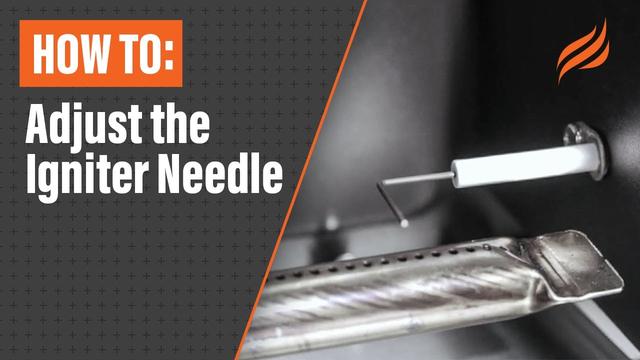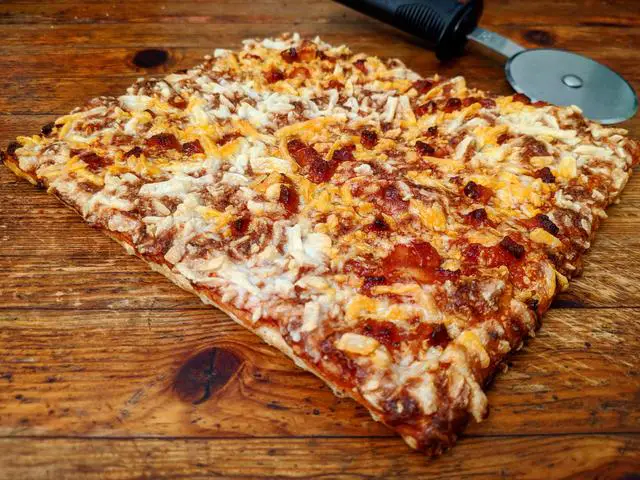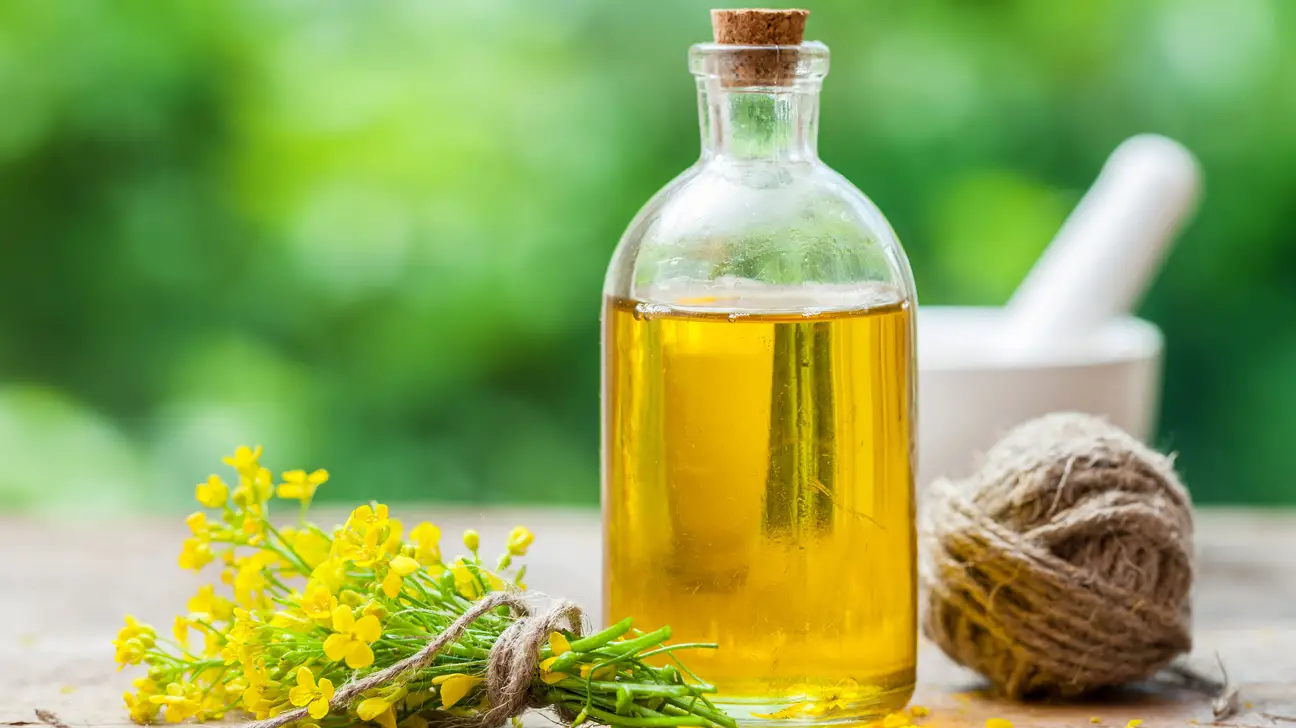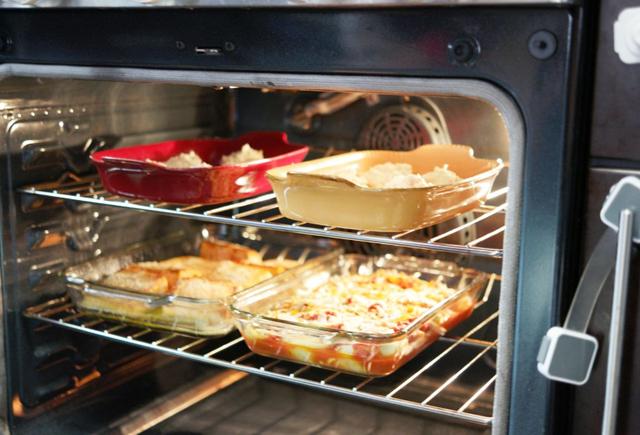
“Glass plates and ovens: A match made in culinary heaven or a recipe for disaster? Discover the truth behind the age-old question of whether it’s safe to place a glass plate in the oven. Unravel the do’s and don’ts, potential risks, and expert advice to ensure your cooking adventures remain both delicious and safe.”
Can You Put a Glass Plate in the Oven?
When it comes to putting glass in the oven, it depends on the type of oven and the type of glass. In a standard electric oven, it is unlikely that your glass will break. However, if you have an oven with a broil setting, there is a possibility that the glass could get too hot and shatter. It is important to know whether the glass you are using is oven safe and to what degree the manufacturer recommends it can withstand.

Most oven-safe glass can handle temperatures up to 600°F, so as long as you keep the heat lower than that, it is safe to use in the oven. Pyrex, one of the top glassware brands, is designed to withstand any temperature in the oven. Other glassware may not be able to tolerate high heat. It is crucial to check the specifications on your cookware before using it in the oven.
While most glass dishes can be safely used in the oven, there are situations that can cause even oven-safe glass to break. Sudden temperature fluctuations or using non-tempered glass at high temperatures can lead to breakage. To prevent this, allow your glassware to come up to room temperature before placing it in a preheated oven and avoid rapid temperature changes. By following these guidelines and checking manufacturer instructions, you can ensure that your glassware remains intact while cooking in the oven.
How Much Heat Can a Glass Pan Take?
Glass pans can generally withstand temperatures up to 600°F, making them safe for use in most home ovens. However, it’s important to check the specifications of your glassware to ensure that it is oven-safe and can handle high temperatures. Pyrex is a popular brand known for its ability to withstand any temperature in the oven. Other glassware may not be able to tolerate such high heat and could warp or break if exposed to temperatures beyond their limits.
It’s also crucial to avoid sudden temperature changes when using glass pans in the oven. For instance, placing a cold dish directly from the refrigerator or freezer into a hot oven can cause it to shatter due to the rapid change in temperature. To prevent this, allow your glassware to come up to room temperature before putting it into the oven.
Additionally, stacking glass dishes on top of each other in the oven should be avoided, as this can create uneven heating and increase the risk of breakage. After cooking, allow hot glassware to cool on a cooling rack or potholder before washing or refrigerating. It’s important not to place hot glassware directly on cool surfaces or in the refrigerator/freezer without allowing it to cool first.
Overall, as long as you follow these guidelines and ensure that your glass pan is oven-safe and used within its recommended temperature range, you can safely cook with it in the oven without worrying about breakage.
What Can Cause Glass to Break in the Oven?
Glass can break in the oven due to sudden temperature changes. If you take a glass dish straight from the refrigerator or freezer and place it directly into a hot oven, the rapid change in temperature can cause the glass to shatter. Additionally, using glassware that is not meant for high heat can also lead to breakage. Non-tempered glass, like dinner plates or mugs, should not be used in the oven as they can crack or shatter when exposed to high temperatures.
Another factor that can cause glass to break in the oven is exceeding its recommended temperature limit. While most oven-safe glassware can withstand temperatures up to 600°F, it’s important to check the manufacturer’s specifications for each piece of glassware. Using glass that is only rated for lower temperatures in a hotter oven can cause warping or bending, leading to breakage.
To prevent glass from breaking in the oven, it’s best to allow it to come up to room temperature before placing it in a preheated oven. Avoid placing cold glassware on hot surfaces or exposing it to rapid temperature changes. Following these precautions and using properly rated oven-safe glassware will help ensure that your glass doesn’t break while cooking.
Can I Put a Glass Plate in the Oven?

When it comes to putting a glass plate in the oven, it is important to consider whether the plate is oven safe. Most glass plates, especially those made by reputable brands, are not designed for use in the oven and should not be subjected to high temperatures. Non-tempered glass plates can crack or shatter if exposed to high heat in the oven.
However, there are some glass plates that are specifically labeled as oven safe. These plates are usually made of tempered glass and can withstand higher temperatures without breaking. It is crucial to check the bottom of the plate or refer to the manufacturer’s instructions to determine if it is safe for oven use.
If you have an oven-safe glass plate, you can place it in a preheated oven at a low temperature, such as 300°F. It is important to avoid exceeding the temperature limit specified by the manufacturer and to monitor the plate closely while it heats up. Rapid temperature changes and using the wrong type of glass can increase the risk of breakage, so it is essential to educate yourself about your specific glassware before using it in the oven.
How to Keep Glass From Breaking in the Oven
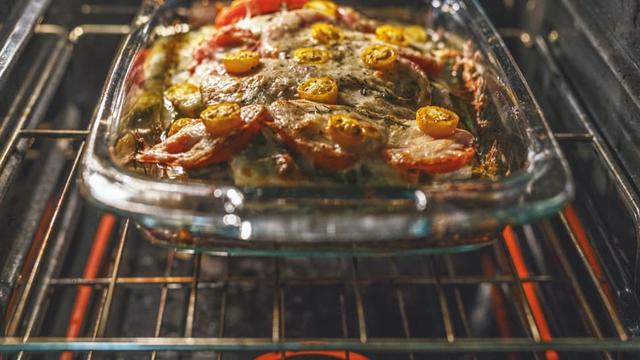
To prevent your glassware from breaking in the oven, there are a few steps you can take. First, make sure you are using only oven-safe glass. Check the bottom of the dish to see if it is labeled as oven safe. If you are unsure of the temperature limit for your glassware, check the manufacturer’s website or pamphlet for more information.
Before placing your dish in the oven, bring it up to room temperature to avoid sudden temperature changes. If you have a frozen casserole in the dish, allow it to thaw in the refrigerator overnight and then come up to room temperature before cooking.
Always preheat your oven to the correct temperature before placing your glass dish inside. Avoid stacking dishes on top of each other in the oven, as this can create uneven heat distribution. After cooking, allow hot glassware to cool on a cooling rack, potholder, or dry cloth before washing, refrigerating, or freezing. Do not place hot glassware directly on a wet or cool surface.
Can You Put a Frozen Pyrex Dish in the Oven?
Yes, you can put a frozen Pyrex dish in the oven. However, there are some precautions you should take to ensure that it doesn’t break. Firstly, it’s important to allow the dish to thaw in the refrigerator overnight before placing it in the oven. This will help prevent any sudden temperature changes that could cause the glass to shatter.
Once the dish has thawed, bring it up to room temperature before putting it in the preheated oven. This gradual increase in temperature will help prevent any stress on the glass and reduce the risk of breakage. It’s also important not to place cold Pyrex directly on a hot surface, such as the stovetop.
Other Tips for Preventing Glassware From Breaking
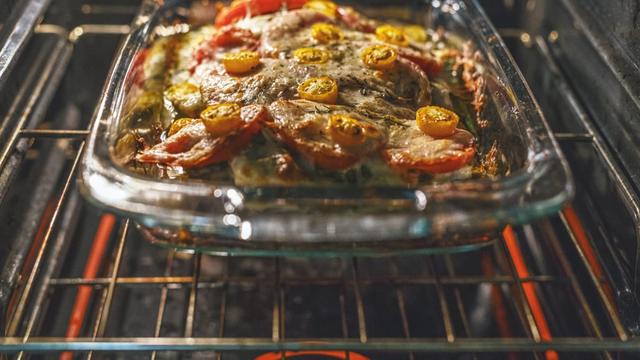
1. Use only oven-safe glass: Before using any glassware in the oven, make sure it is labeled as oven-safe. Check the bottom of the dish or refer to the manufacturer’s instructions to ensure it can withstand high temperatures.
2. Bring your dish to room temperature: To avoid sudden temperature changes that can cause glass to shatter, always allow your glassware to come up to room temperature before placing it in a hot oven. If you have a frozen casserole in the dish, thaw it in the refrigerator overnight and then let it reach room temperature before cooking.
3. Preheat the oven correctly: Make sure to preheat your oven to the correct temperature before placing your glass dish inside. This will help distribute heat evenly and reduce the risk of thermal shock.
4. Avoid stacking dishes: When cooking with glassware, avoid stacking multiple dishes on top of each other in the oven. The weight and pressure from stacked dishes can increase the risk of breakage.
5. Allow hot glassware to cool properly: After removing your glass dish from the oven, place it on a cooling rack, potholder, or dry cloth rather than directly on a wet or cool surface. Allowing hot glassware to cool gradually can prevent thermal stress and potential breakage.
6. Handle with care: Be cautious when handling hot glassware and always use potholders or oven mitts to protect your hands from burns. Avoid placing hot glassware in cold environments such as refrigerators or freezers; instead, allow it to cool first before storing leftovers.
By following these tips, you can minimize the risk of breaking your glassware while cooking in the oven and ensure a safe and enjoyable cooking experience.
Conclusion
In conclusion, whether or not you can put glass in the oven depends on several factors. If you have a standard electric oven, it is unlikely that your glassware will break. However, if your oven has a broil setting, there is a possibility that the glass could get too hot and shatter. It is important to understand the type of glass you are using and check if it is labeled as oven safe.
Most oven-safe glassware can withstand temperatures up to 600° Fahrenheit, which is higher than the typical cooking temperature in an oven. Pyrex is one of the top brands known for its ability to withstand high heat and can be used in any temperature within a home oven. However, not all glassware can tolerate such high temperatures, so it is crucial to check the specifications provided by the manufacturer.
To prevent your glassware from breaking in the oven, it is recommended to allow it to come up to room temperature before placing it in a hot oven. Rapid temperature changes are one of the main causes of glass breakage. Additionally, avoid stacking dishes on top of each other and do not place hot glassware on cool or wet surfaces.
In conclusion, it is generally not recommended to put a glass plate in the oven as it can shatter due to thermal shock. Glassware specifically designed for oven use, such as borosilicate glass, is a safer alternative. Always refer to the manufacturer’s instructions and exercise caution when using glassware in high-temperature environments.
Learn More About Grilling
If you want to learn more about grilling, check out these other helpful resources!

